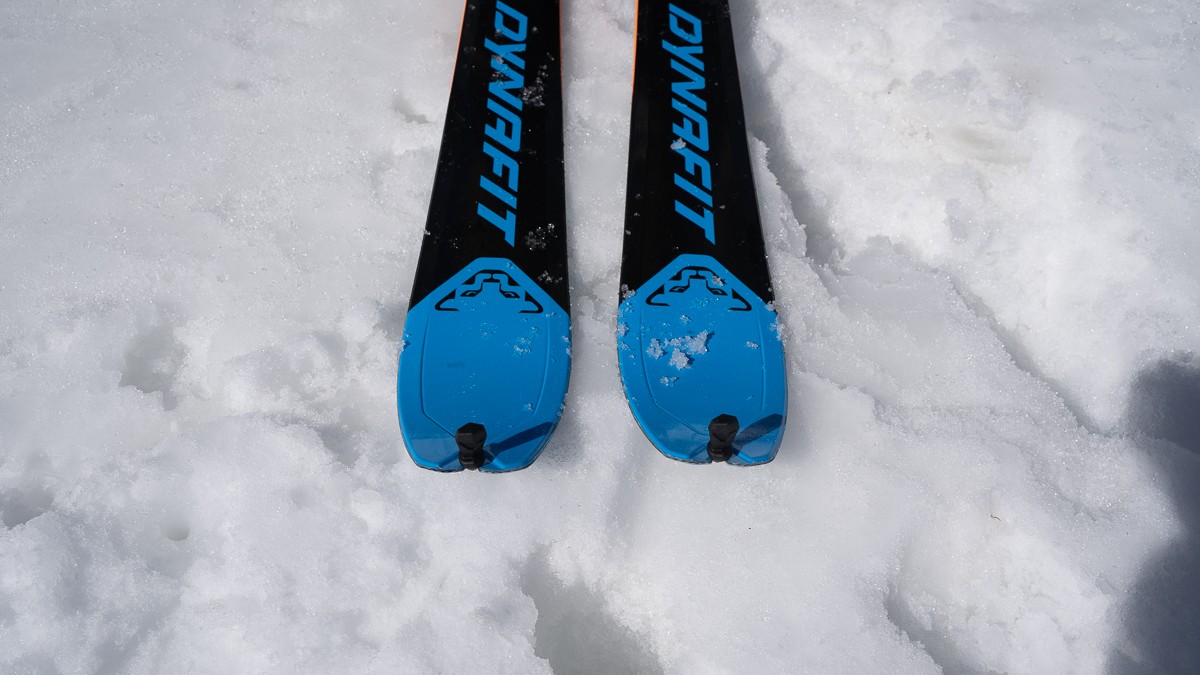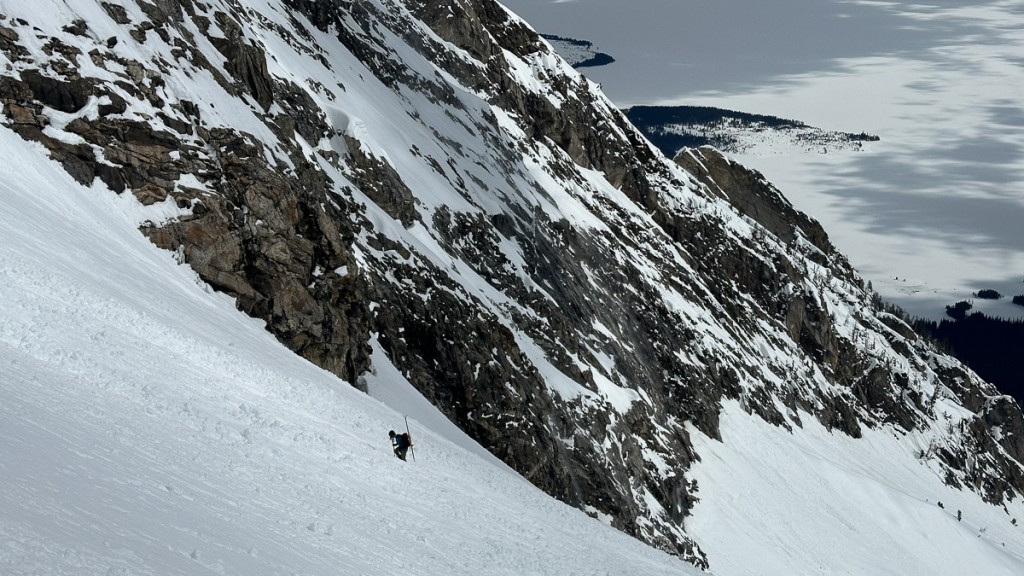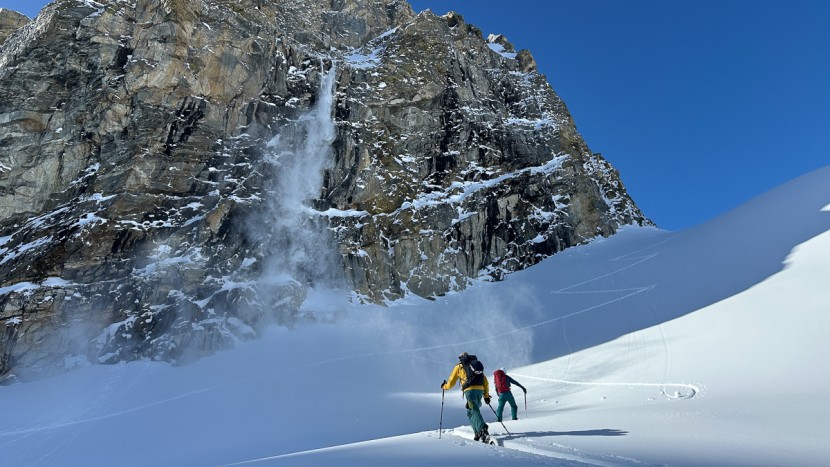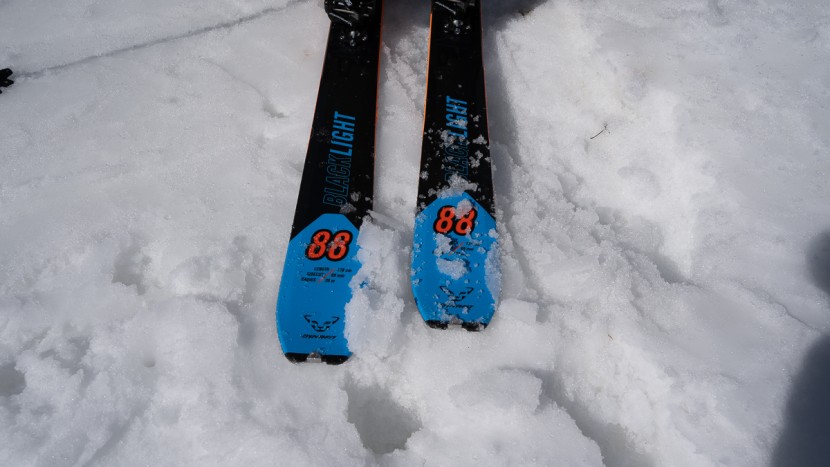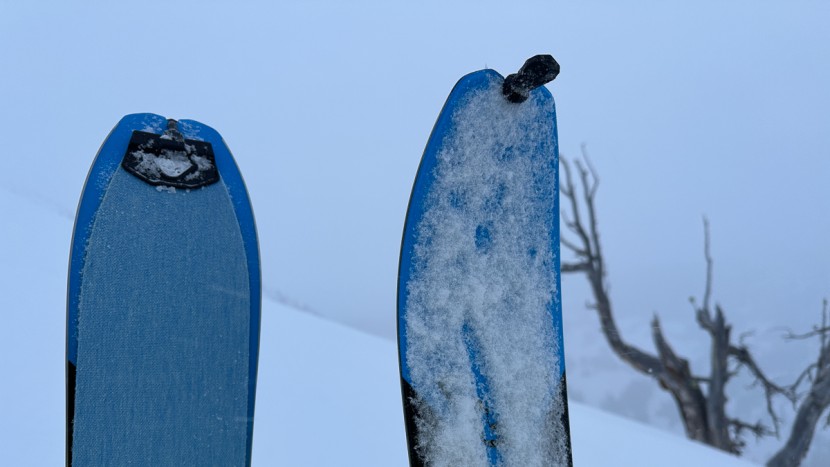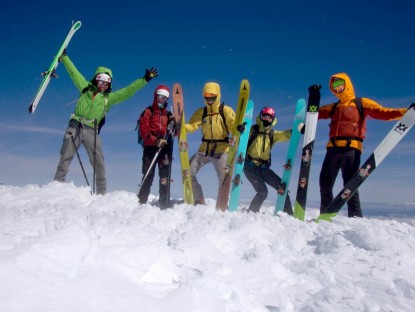Our Verdict
Compare to Similar Products
 This Product
Dynafit Blacklight 88 | |||||
|---|---|---|---|---|---|
| Awards | Optimized for Downhill Performance | Best Overall Backcountry Skis | Best Bang for the Buck | ||
| Price | $800 List | $639.96 at Evo Compare at 3 sellers | $719.96 at Backcountry Compare at 2 sellers | $800 List | $469.95 at Amazon Compare at 2 sellers |
Overall Score  |
|||||
| Star Rating | |||||
| Bottom Line | Excellent for ski mountaineering skis, and just as suitable for more mellow corn skiing in the late spring | Heavier skis that offer meaningful performance on the downhill, ideal for newer backcountry skiers or for experts who don't mind trading a bit of efficiency for a bit more fun | This relatively wide all-season ski is one of our favorites and great for all-around human-powered use | Reasonably affordable and great for a wide range of human-powered skiing, these are your backcountry "quiver-of-one" | Skis optimized for downhill performance across many circumstances and skillsets, but you'll pay a price in weight |
| Rating Categories | Dynafit Blacklight 88 | Salomon QST Echo 106 | Blizzard Zero G 105 | K2 Wayback 106 | Elan Ripstick 106 |
| Weight (25%) | |||||
| Firm Snow (20%) | |||||
| Powder (20%) | |||||
| Crud and Poor Snow (20%) | |||||
| Stability at Speed (15%) | |||||
| Specifications | Dynafit Blacklight 88 | Salomon QST Echo 106 | Blizzard Zero G 105 | K2 Wayback 106 | Elan Ripstick 106 |
| Measured Weight Per Ski (g) | 1291.5 | 1779 | 1513 | 1436 | 1858 |
| Measured Length Tested (cm) | 176 | 180 | 178 | 179 | 177 |
| Measured Waist Width (mm) | 89 | 105 | 105 | 105 | 106 |
| Weight Per Surface Area Ratio (g/cm²) | 0.68 | 0.8 | 0.72 | 0.68 | 0.86 |
| Measured Weight Per Pair (g) | 2583 | 3557 | 3025 | 2872 | 3715 |
| Measured Weight Per Pair (lbs) | 5.7 | 7.8 | 6.7 | 6.3 | 8.2 |
| Manufacturer Claimed Length (cm) | 178 | 181 | 180 | 179 | 180 |
| Available Lengths (cm) | 158, 165, 172, 178, 184 | 157, 165, 173, 181, 189 | 164, 172, 180, 188 | 165, 172, 179, 186 | 167, 174, 181, 188 |
| Measured Dimensions, Tip/Center/Tail (mm) | 124/89/111 | 140/105/125 | 133/104/118 | 131/105/120 | 143/105/119 |
| Manufacturer Claimed Dimensions (mm) | 124/89/112 | 136/106/126 | 133/105/119 | 132/106/121 | 143/106/120 |
| Turn Radius (m) | 20 | 19 | 23 | 22.3 | 19.5 |
| Construction Type | Semi-Cap | Sandwich | Sandwich | Semi-Cap | Sandwich |
| Core Material | Paulownia | Poplar, Caruba | Paulownia | Paulownia | Tubelite |
| Rocker/Camber Profile | Tip and tail rocker, camber underfoot | Tip and tail rocker, camber underfoot | Tip and tail rocker | Tip and tail rocker, flat underfoot | Tip and tail rocker, camber underfoot |
Our Analysis and Test Results
We have long held a space or two in our review for specialized firm snow skis. For a decade or so, that slot has been filled, off and on, with Dynafit skis. Model names have changed, and designs have been tweaked, but overall ski construction remains fairly similar. Their lineage is strong. The Blacklight 88 is the current iteration of this proven, steep-and-firm ski. They ski smooth, hard snow as well as anything out there and do so while keeping weight to a minimum. Even though they are a specialty “quiver” ski, they do offer just enough versatility when conditions tilt slightly away from that smooth and firm ideal.
Performance Comparison
Weight
It has become the market convention to discuss ski weights in grams per ski – we'll stick with that convention here. On our calibrated scale, the 176 cm Blacklight 88 we tested weighs 1292 grams. That translates to 2583 g, or 5.7 lbs for the pair. The type of skiing we recommend these for – steep skiing, on firm corn, or icy snow – is a methodical, predictable practice, and you don't need a ski with a ton of mass to get the performance you want. In other circumstances of backcountry skiing, however, you will trade a great deal of downhill performance for a ski as light as the Blacklight 88.
Firm Snow
The Blacklight 88 is a specialty ski chosen for its performance on firm snow. The edge hold on this relatively skinny ski is solid and balanced, no matter whether you are on perfectly ripened corn snow, windboard, or icy steeps. The additional weight savings that come with a solid skinny ski allow you to travel longer distances and climb greater vertical, which makes the Blacklight 88 an excellent adventure ski.
Powder
On the other hand, you don't choose a ski like the Blacklight 88 to ski powder snow. Nonetheless, if you are pressed into skiing powder – say, on an expedition where a storm unexpectedly moves in – you'll survive. You will need to slow down and adapt your ski technique to leverage all three dimensions of your body movement. Short radius, bouncy turns are the flavor of choice if you find yourself in powder on these relatively narrow skis.
Crud and Poor Snow
Compared to most skis in our lineup, the Blacklight 88 is narrow, and the longitudinal profile is stiff. That stiff profile certainly allows it to handle chopped-up, refrozen tracks or avalanche debris better than one would expect from a ski of this size and weight. Even skiing mild breakable crust – usually in the form of refrozen corn snow – is satisfactory on this ski. However, if you encounter deeper snow with a significant wind skin or surface crust, the Blacklight 88 will suffer. There just isn't enough mass or flotation to pop you up on top.
If you slow down, the Blacklight 88 will even plow through wet, “mashed potatoes” snow. There is less surface area for suction to the snow, and the stiff flex, again, helps them push right through. The connections we've made between stiffness, dimensions, and performance is an educated, confident deduction, but it is a deduction nonetheless. No one ski design attribute alone makes or breaks performance in a particular metric. However, we were impressed with the power of this smaller ski in tough snow conditions.
Stability at Speed
We recommend you let these run fast only on smooth, perfectly softened corn snow. In any other context, you will want to dial back your speed (and expectations) out of respect for the limitations of the lightweight Blacklight 88. The stiff flex pattern will sustain high-energy inputs, but they're still going to wobble and dodge at speed.
Should You Buy the Dynafit Blacklight 88?
These skis will serve you well on the melt-freeze surfaces of the coastal ranges, but they will excel in the wind-blown snowpacks of the Eastern Sierra, White Mountains of New Hampshire, or the high peaks of Colorado's Front Range. They are perfect for ski mountaineering – their low weight will allow you to travel greater distances with more vertical on fresher legs. Pair them with light bindings and light- or mid-weight boots and the specialty-cut Dynafit Speedskins for an excellent, lightweight kit.
What Other Backcountry Skis Should You Consider?
The only meaningful, direct comparison to the Blacklight 88 is the Atomic Backland 95. The Backland 95 is also a ski focused on tackling steep, firm snow but offers the versatility of a wider base. It is 131 grams heavier per ski, but with that added weight and girth, you earn considerably better performance in soft snow without any real loss of steep skiing performance. If you are particularly focused on lightweight skis and want to add a powder ski to your quiver, no other ski offers better powder skiing performance (or a better weight per surface area ratio) than the Voile HyperDrifter.


